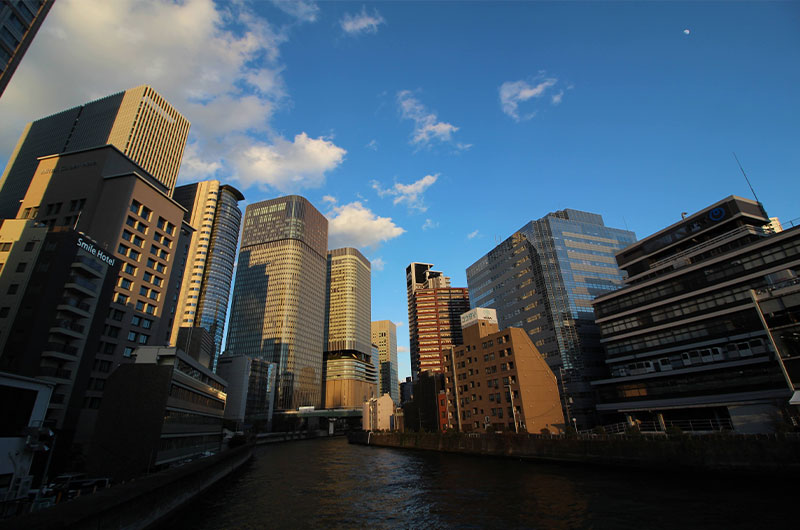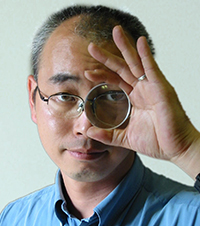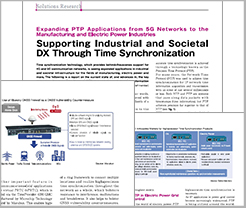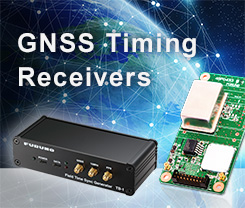Column
Using the TB-1 and GT-100 at a "Multipath Dojo" in the Major Metropolis of Osaka
Evening Sunlight Amid the High-Rises
When you're walking between tall buildings during the early morning or sunset hours, a flash of light might catch your eye at times, coming from a surprising direction. This is often due to sunlight reflecting off of a building's exterior into the smaller street or alley where you stand.
Interestingly enough, positioning signals from GNSS satellites reflect off of building surfaces in the same way that light does. As a result, signals that travel in a straight-line course from satellite to antenna may intersect with signals that have reflected off of a surface and taken a different course to that antenna, resulting in intermixing of the two signal types. In other cases, signals may be blocked from reaching their destination entirely by a building, reflected instead in various different directions. It goes without saying that both of these phenomena reduce the Accuracy of positioning and time synchronization operations.

Challenges Unique to Major Urban Centers
Groups of large buildings present unique challenges. Major cities are filled with great numbers of people who create intense demand for signal transmission, and as mobile phone networks evolve from 4G to 5G and 6G infrastructures, increasingly high-frequency signal waves are being used. High-frequency signals offer the advantage of faster communication speeds, but they also come with the disadvantage of being unable to travel long distances. Mobile phone network operators must build dense networks of base stations to counter this problem, which is why built-up areas of big cities see large number of new base station construction projects.
One challenge that arises in this situation is successfully acquiring reliable time-related information.
As a prerequisite, any equipment that transmits radio signals must employ a accurate oscillator to maintain signal frequencies within a prermitted range, and many mobile base stations use oscillators that rely on GNSS as their source in order to obtain stable frequencies and signal timings.
Why Accurate Time Information Is Important
Let's explore this in further detail. In addition to frequency accuracy, time accuracy down to not just the millisecond, but to the microsecond, is required due to the widely established use today of time-division duplexing, or TDD, approach. Outward and return signals the same, shared frequency to divide up time—in other words, they operate like trains traveling in opposing directions on a single track. In order to avoid figurative "collisions" between these trains, which operate at high frequencies, it's necessary to plan out intricate timetables and manage operations carefully. To this end, the key is the precision and accuracy of the clocks.
Returning from our train metaphor to base stations: It's necessary for each base station to maintain synchronized time with other, nearby stations. Just like an off-key vocalist in a choir, a single out-of-sync base station can have adverse effects on nearby stations. As touched upon earlier, mobile phone network operators today face the following tough cycle of challenges, which is even more daunting now than in the past:
- High communication service demand in big cities
- The necessity of correct time information for areas with high signal demand
- The necessity of optimal GNSS signal receipt environmental conditions to achieve item 2
- The decline of GNSS signal receipt conditions in large cities (despite the requirement in item 3)
- Return to item 1
Behind the scenes, operators are dedicated to finding a solution to this ongoing challenge.
A Facility to Showcase the Capabilities of DSS
As a company that provides timing products for time synchronization operations, FURUNO ELECTRIC offers GNSS receiver product utilizing Dynamic Satellite Selection™ (DSS) in order to help mobile phone network operators overcome problems with their base stations. DSS makes use of a statistical approach developed by the NTT, which revolves around an algorithm designed to select satellites offering the best signal receipt conditions. I won't go into depth about the strengths of this technology in this article. However, it's important for FURUNO, as the company releasing this new technology to the world, to demonstrate its effectiveness in some way. In short, we must show people just what this impressive technology can do.
Multipath Lab Near the High-rise District of Nakanoshima, Osaka
To this end, FURUNO has selected a major business district in Osaka for the location of its Multipath Lab. "Multipath," or "multipath propagation," refers to the arrival of radio waves at an antenna after being reflected at random, which creates a challenging environment for GNSS receivers. At the Lab, we installed a dual-band GNSS antenna on the balcony, where it is exposed to no rain and hardly any sunlight, and has a view of nothing more than surrounding buildings and the sky. The antenna cable passes through a hole to the interior of the air conditioner duct, and from there into the adjacent room interior where it connects with our performance verification system. Compared with an open-sky situation, wherein nothing obstructs signal arrival, built-up urban areas like this present problems for signal receipt, yet the antenna is able to receive 'poor GNSS signals' with ease, at any time and any conditions. If we were discussing a new car model on a test track, it would be a high-quality rough road indeed. Likening the situation to severe martial arts and spiritual training, one might be compelled to call this facility a "multipath dojo" for the equipment in question, where it undergoes rigorous training to withstand the harsh conditions of signal reception in dense urban environments.
 FURUNO's Multipath Lab near the high-rise district of Nakanoshima, Osaka. The antenna pictured here is multi-GNSS timing antenna model AU-500.
FURUNO's Multipath Lab near the high-rise district of Nakanoshima, Osaka. The antenna pictured here is multi-GNSS timing antenna model AU-500.
The Excruciating Search for a Suitable Lab Location
FURUNO is not located in the middle of any major city, where real estate prices tend to be high, so we needed to search for a suitable rental property for the Lab. In order to find a room with poor signal receipt conditions, we were on the lookout for a low-rise building sandwiched between numerous high-rises. As someone who lived through Japan's asset price bubble era, it reminded me of the kinds of properties a land shark might have looked for at that time. Chief in Charge of Overseas Sales Tomofumi Sumida recalls his efforts for the antenna project: "I had found a drinking establishment located in a building that seemed just right for the job. I visited a number of times and, after getting to know the staff, asked if I could be introduced to the building owner. They chased me out of there in a heartbeat."
Even if Sumida had been able to talk with the owner or a connected real estate agent, it is highly unlikely they would have understood or been receptive to his explanation of the plan to install a special type of antenna product on the balcony and utilize various types of verification-use electronic equipment inside the apartment.
 The verification-use system installed in the room (certain elements have been blurred out)
The verification-use system installed in the room (certain elements have been blurred out)
 The GT-100 evaluation kit for continuous testing operations (left) and the TB-1 brought in for verification purposes (right)
The GT-100 evaluation kit for continuous testing operations (left) and the TB-1 brought in for verification purposes (right)
"Luckily, I was able to find a vacant property through a personal connection, and we managed to establish ourselves there by July 2023," continues Sumida. "We actively promoted the lab's establishment at international academic conferences and seminars to generate excitement for the project. I can say that the ability to conduct continuous testing in a real-world, multipath environment makes this facility truly groundbreaking, even on a global scale."
The Multipath Lab is used for comparison and verification of situations in which DSS is and is not used, and for comparisons with other companies' products, all carried out on a continuous basis. Although no atomic clock has been installed yet, the Lab is currently assessing a method of estimating time-information stability based on coordinate value calculation inconsistencies in receiver products. The resulting, raw data obtained through these efforts will, much like test-drive data from the abovementioned poor-quality test track, prove to be extremely useful in technological development and improvement efforts moving forward. The results of the product's ascetic training rituals conducted here in the "dojo" will surely make for stronger "cavalry" in the future.
 Chief in Charge of Overseas Sales Tomofumi Sumida (left), and his partner in the rental property search, Taiki Nakai of the Products Planning and Marketing Section (right)
Chief in Charge of Overseas Sales Tomofumi Sumida (left), and his partner in the rental property search, Taiki Nakai of the Products Planning and Marketing Section (right)
 The lab is located in a small room looking out at the high-rise business district of Nakanoshima, Osaka
The lab is located in a small room looking out at the high-rise business district of Nakanoshima, Osaka
Writer introduction

Mr. Mitsunari Kita Science and technology writer
Born in Ishikawa Prefecture in 1964. Based on his experience in covering industrial technology, cutting-edge technology, and space development, he is passionate about unraveling and conveying difficult topics in an interesting way to people of all ages, from children to senior citizens. From 2009 to 2014, he was a member of the editorial board of "JAXA's," the official magazine of the Japan Aerospace Exploration Agency. Author and co-author of the following books: 『あなたにもミエル化? ~世間のなりたちを工学の視点から~』(幻冬舎mc)、『私たちの「はやぶさ」その時管制室で、彼らは何を思い、どう動いたか』(毎日新聞社)、『東京大学第二工学部70周年記念誌 工学の曙を支えた技術者達』(東京大学生産技術研究所) etc.,
* All registered trademarks used herein are the property of their respective owners.
Pick up
Column
FURUNO Column
-
Common Problems That Affect GPS/GNSS Time Synchronization

-
How to select GPS/GNSS antennas for time synchronization

Column by Mr. Mitsunari Kita (Science and technology writer)
-
The Observation Network Created by the Earthquake Proves Useful for Accurate Timekeeping (Part Two of Two) - A Solution to the "Mr. Higgins Problem" in Space -

-
The Observation Network Created by the Earthquake Proves Useful for Accurate Timekeeping (Part One of Two)

-
FURUNO ELECTRIC Joins Experts From Around the World on a Norwegian Island for Jammertest 2024

-
Unraveling the Mysteries of Venus Based on "Occultation"

-
Atoms as the Basis for Measuring Both Fleeting Moments and Near-Eternities

-
Time Progressing with a Speed Difference of Just 4.4647 Ten-Billionths!

-
Critters Who Revitalize Forests Through the Spreading of Food Caches

-
Small But Significant Variances in Gravity and Time (Part Two of Two)

-
Small But Significant Variances in Gravity and Time (Part One of Two)

-
Why the GT-100 Time-synchronization GNSS Receiver Module is Like Fragrant Soup Curry

-
What Rainbows Can Teach Us About Dual-Band GNSS

-
The Amazing Things That Are Possible With Just a Clock

-
When Subterranean Earth Meets Outer Space

-
Using the TB-1 and GT-100 at a "Multipath Dojo" in the Major Metropolis of Osaka

-
The Disaster-struck Field Time Sync Generator TB-1: True Performance Revealed Through a Lightning Strike

-
Knowing the "Now" of Our Earth Through GNSS

-
The Reason GPS Counts Time in 1.5-second Intervals

-
Similarities Between "On My Count!," the 117 Notification System, and GPS

-
Reliable Clocks Help Us Find a Silver of the Clouds

-
Why Time Synchronization is Vital for Criminal Investigations, Seismograph Measurements and Solar Wind Observation

-
What Was "Cesium" About Cesium Akina?

-
Updating Analog Broadcasting with GNSS Time Synchronization Technology

-
The Long History of One Second (Part II)

-
The Long History of One Second (Part I)

-
A Solo Journey - Three-liter Microsatellite Mission Support via GPS (GNSS) and Satellite Communication -

-
A Solo Journey - The GPS (GNSS) Tracking System That Helped Kenichi Horie Cross the Pacific -

-
The Day After a Superflare - Effects on power and wireless communication infrastructures -





